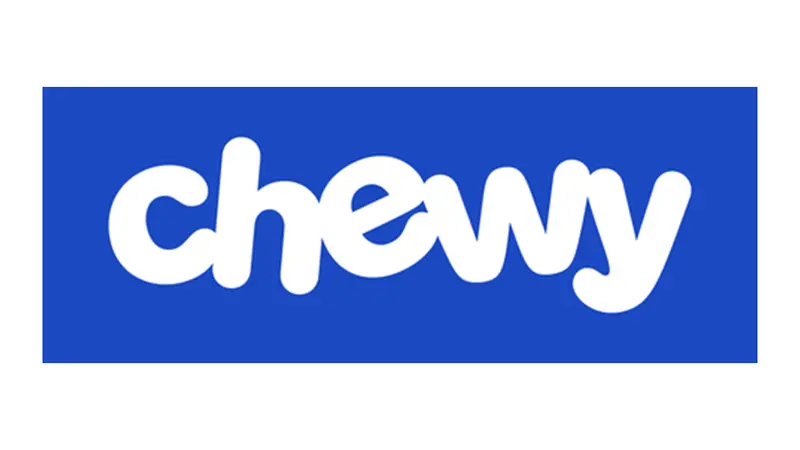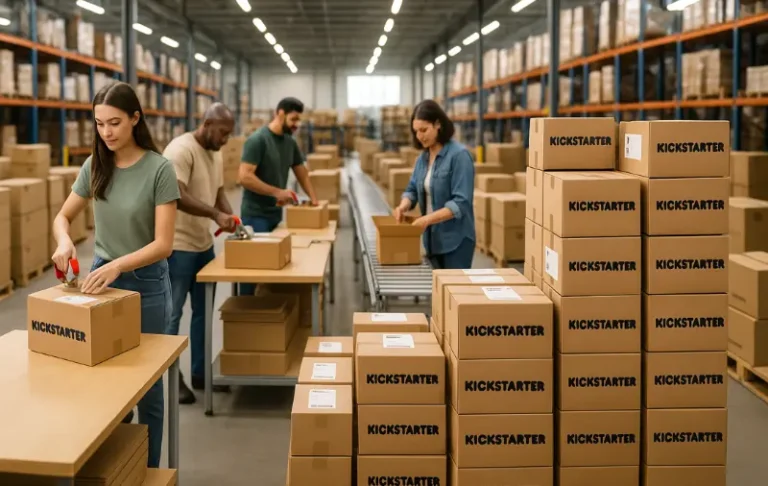How To Choose The Best Chewy 3PL For Your Orders

Last updated on June 03, 2025

In this article
 16 minutes
16 minutes
- Why Selling on Chewy Is Great for Ecommerce Merchants
- Chewy Case Studies (Brand Success Stories)
- Chewy Seller Onboarding (Step-by-Step)
- Common Pitfalls & Pro Tips for Chewy Sellers
- Chewy Program Growth & Updates
- What to Look for in a Chewy 3PL
- The Role of Logistics in Customer Satisfaction
- Responsive, Reliable Customer Support
- Top Chewy 3PL Companies
- Summary
- Frequently Asked Questions
Chewy is a leading online pet retailer that recently launched a curated marketplace allowing select third-party brands to sell via drop-shipping. Under this program, vendors list products on Chewy.com but fulfill orders from their own warehouse or a 3PL, shipping directly to consumers. 3PLs play a crucial role in managing order fulfillment as part of the overall supply chain for Chewy Sellers, handling everything from receiving goods to delivering finished products and managing returns. Chewy partners with a commerce platform (Rithum Commerce Suite) to manage these unowned-inventory sales. In mid-2023, Chewy reported working with over 3,500 brands (110,000+ products) through this model. Enrollment is typically invitation-only: Chewy category managers reach out to qualified vendors (often pet-product manufacturers) and guide them through the Vendor Partner Portal (VPP) onboarding. Once approved, Sellers integrate via EDI/API with Chewy’s system (commonly using Rithum’s DSCO platform), which is compatible with various ecommerce and ERP platforms, to synchronize inventory, orders, shipping, and invoicing.
Why Selling on Chewy Is Great for Ecommerce Merchants
Chewy has emerged as a leading pet supply retailer, offering a vast platform for merchants to reach dedicated pet owners. One key benefit for merchants is the ability to connect with customers who are ready to spend money on pet food, food, and other pet products, driving increased sales and revenue. With its user-friendly interface and loyal customer base, Chewy provides an excellent opportunity for businesses to increase sales and expand into new markets. Chewy’s platform is especially effective for brands selling pet food and related food products, as customers are eager to spend money on these essentials.
Slash Your Fulfillment Costs by Up to 30%
Cut shipping expenses by 30% and boost profit with Cahoot's AI-optimized fulfillment services and modern tech —no overheads and no humans required!
I'm Interested in Saving Time and MoneyChewy Case Studies (Brand Success Stories)
Although still relatively new, Chewy’s marketplace has attracted prominent pet brands. For example, BARK, Inc. announced in August 2024 that it had launched its bestselling toy collections on Chewy, expanding its product lines available to over 20 million Chewy customers. This partnership is described as the first time Chewy carries BARK toys, indicating Chewy’s effort to broaden its assortment with popular brands. Other pet companies have begun testing Chewy’s platform; for instance, BARK’s entry underscores rapid adoption by leading pet vendors. These brands have scaled their operations to handle the increased order volume generated by Chewy’s large customer base, demonstrating their ability to manage high volume efficiently. Chewy’s Pet Vet “Practice Hub” program, launched in 2021, also illustrates the company’s move to partner with third-party Sellers, though that program is targeted to veterinary clinics rather than general consumer brands. These examples suggest Chewy’s third-party channel is actively expanding, though detailed performance metrics per brand are not yet public.
Chewy Seller Onboarding (Step-by-Step)
1. Invitation/Account Creation: Chewy invites you via email to register on the Vendor Partner Portal. Click the link and create a VPP account.
2. Company & Contact Info: Log in to VPP and complete the Company Information and primary contact fields. This data is often prefilled by Chewy’s merchant team, but you must review and complete any missing details.
3. Skip Ordering (Drop-Ship): In “Ordering Information,” you would normally enter your warehouse locations and lead times, but drop-ship vendors skip this step (Chewy handles orders without requiring vendor stock in Chewy’s DCs).
4. Banking & Tax: Provide banking details (voided check or bank letter) for payments, plus contacts for Accounts Payable and Receivable. Fill out tax forms (W-9, etc.) as prompted.
5. Product Catalog (PAF): Download Chewy’s Product Addition Form (PAF) template from VPP. Enter your catalog data (item names, UPCs, dimensions, pricing, etc.) into the appropriate category sheet, then upload the completed PAF back to VPP.
6. E-Sign Documents: VPP integrates with DocuSign. Review and electronically sign all required vendor agreements and compliance documents.
7. Submit for Review: Once all forms are complete, click “Submit” in VPP. The screen will confirm receipt. Chewy’s team will then review your submission.
8. Integration Testing: After approval, you’ll work with Chewy (via DSCO/EDI or API) to test order flow. Chewy may send sample orders and require successful acknowledgment, shipment, and invoicing.
9. Go Live: After passing tests, Chewy grants you live selling access. Your products will appear on Chewy.com, and actual consumer orders will begin.
Note: Throughout onboarding, focus on building a strong relationship with Chewy’s merchant team. A positive relationship helps ensure smooth onboarding, ongoing support, and long-term operational success.
Common Pitfalls & Pro Tips for Chewy Sellers
While Chewy offers significant advantages, merchants may encounter challenges such as strict fulfillment requirements, managing inventory across multiple channels, and ensuring timely deliveries to maintain customer satisfaction. Third-party logistics providers can help Chewy Sellers by managing the entire logistics process, including storage, fulfillment, and distribution, to streamline operations and meet Chewy’s high standards.
- Missed Integration/EDI Errors: Failing to set up correct EDI/API connections can delay orders. Many retailers rely on robust integration to streamline order processing and maintain efficient B2B exchanges. Tip: Use a middleware or work closely with Rithum/DSCO support to ensure your EDI maps (850/856/810) meet Chewy’s specs. Test end-to-end early.
- Packaging Slip Confusion: Including a generic pack slip can confuse Chewy’s system. Tip: Follow Chewy’s instructions: “Chewy does not use pack slips for drop-ship orders.” Instead, include only a retailer-facing packing list if needed.
- Unsupported Addresses: Shipments to P.O. boxes or military APO/FPO addresses will be rejected. Tip: Validate all customer addresses before shipping; use commercial addresses.
- Slow Fulfillment: Late shipments hurt your vendor rating. Tip: Chewy demands fast fulfillment (often same-day pick, 1–3 days transit for essentials such as pet food, and 1–5 days transit for non-essential, heavy, or specialized items). Keep inventory ready and use overnight/2-day carriers when needed to meet Chewy’s SLA.
- Inventory Sync Errors: Selling out-of-stock items causes cancellations. Effective warehousing is crucial for maintaining accurate stock levels and preventing overselling. Tip: Update your inventory feed or buffer stock to maintain 98–99% in-stock rates. Have a system to quickly edit or cancel orders if you genuinely can’t supply an item.
- Quality/Image Issues: Chewy may reject listings with poor images or missing data. Tip: Provide high-resolution product images and complete descriptions per Chewy’s photo and content guidelines (detailed in VPP playbook).
- Communication Gaps: Delayed responses to Chewy inquiries can stall your onboarding. Tip: Monitor the VPP “Inbox” for Chewy messages and respond promptly. Build a point of contact on Chewy’s merchandising team.
- Pricing Missteps: Avoid setting retail prices too low; Chewy expects competitive but realistic pricing. Tip: Factor in Chewy’s customer base when pricing, and negotiate any MAP policies directly with Chewy’s buyer if needed.
- Return Confusion: Unlike consumer marketplaces, Chewy processes returns centrally. Tip: Understand that Chewy “does not take title to refunded items unless returned,” meaning they may not send items back to you. Clarify return instructions with Chewy for any returns that must be shipped back.
Looking for a New 3PL? Start with this Free RFP Template
Cut weeks off your selection process. Avoid pitfalls. Get the only 3PL RFP checklist built for ecommerce brands, absolutely free.
Get My Free 3PL RFPChewy Program Growth & Updates
Chewy’s third-party marketplace is rapidly developing. Rising customer demand has driven Chewy’s investment in expanding its fulfillment capacity, with a focus on increasing shipping capacity and improving delivery performance through automation and transportation initiatives. In 2023, Chewy extended its Rithum partnership to expand drop-ship capabilities. According to Rithum, Chewy’s partner network already included 3,500+ brands and 110,000+ products as of mid-2023. Chewy’s logistics infrastructure, including Chewy Freight Services, supports these scaling efforts and helps handle higher order volumes efficiently. Press coverage (e.g., BARK’s August 2024 announcement) and trade articles highlight new brand launches on Chewy, indicating the program is active. Chewy’s financial filings do not break out marketplace revenue, but analysts note Chewy is emphasizing third-party growth alongside its core retail business. Future validation may come from Seller testimonials or Chewy statements; for now, the launch of flagship brands on the platform is a key indicator of momentum.
What to Look for in a Chewy 3PL
When selecting a 3PL for Chewy orders, consider the following:
- Seamless Integration: Ensure the 3PL can integrate smoothly with Chewy’s platform for real-time inventory management and order fulfillment.
- Automated Fulfillment Center: Look for partners with an automated fulfillment center that uses advanced automation to handle high order volumes efficiently. Automation reduces the need for manual heavy lifts, improving safety and boosting productivity.
- Customized Packaging and Value-Added Services: Choose a 3PL that offers value-added services such as customized packaging solutions, aligning with Chewy’s standards and enhancing the customer experience.
The Role of Logistics in Customer Satisfaction
Efficient logistics are crucial in maintaining customer satisfaction. Accurate order fulfillment, timely deliveries, and responsive customer service contribute to a positive customer experience, fostering loyalty and repeat business.
Benefits of Working with a 3PL
Partnering with a 3PL offers numerous benefits:
- Operational Efficiency: Streamlined processes and advanced technologies improve order accuracy and reduce shipping times.
- Cost Savings: Outsourcing fulfillment can lower fixed costs associated with maintaining your own warehouse and staff.
- Scalability: A reliable 3PL can adapt to your business’s growth, handling increased order volumes seamlessly.
- Comprehensive Fulfillment Package: Leveraging a complete fulfillment package from a 3PL can further streamline operations and improve scalability.
Responsive, Reliable Customer Support

Order fulfillment is a complex operation, involving multiple, intricate steps in the process from click to delivery. Things don’t always go as planned, but what is crucial is ensuring that your 3PL has a responsive, reliable customer support team that you can rely on to fix problems fast, with minimal disruption to your business operations.
Experience Working with Chewy Sellers
Most traditional 3PLs may not have personnel with the experience and expertise working with Chewy to troubleshoot and fix problems fast, costing you precious time and sales. It is important to identify a Chewy fulfillment partner with a reliable, responsive customer support team who will be ready to dive in and solve problems quickly, so that you’re always selling and keeping your customers happy.
Here’s what one of our customers had to say about Cahoot’s Support team:
“Cahoot’s support is prompt and personal, not monolithic and apathetic as some large companies tend to be. Cahoot is not only a great 3PL provider but also a strategic partner that goes above and beyond for its clients. They are a 5-star team of people who make it their business to care about yours.”
~ VERSACART
Speak to a fulfillment expert
So now that we’ve taken a look at the important criteria that guide your choice of a 3PL to support your Chewy orders, let’s look at the options that are actually available to you, and the pros and cons of each of them.
Scale Faster with the World’s First Peer-to-Peer Fulfillment Network
Tap into a nationwide network of high-performance partner warehouses — expand capacity, cut shipping costs, and reach customers 1–2 days faster.
Explore Fulfillment NetworkTop Chewy 3PL Companies
Amazon Multi-Channel Fulfillment
Amazon Multi-Channel Fulfillment (MCF) is Amazon’s outsourced fulfillment service for merchants selling on non-Amazon sales channels, such as Chewy, whereby Amazon handles the picking, packing, and shipping of the orders coming from those sales channels.
Ecommerce Sellers can store their inventory at Amazon’s warehouses, and MCF will fulfill the non-Amazon orders from select channels. MCF deploys the same infrastructure and resources that power Amazon’s in-house Fulfilled By Amazon (FBA) logistics network.
ShipBob
ShipBob is a 3PL that focuses on serving ecommerce merchants. They have a nationwide network of order fulfillment centers that enable fast shipping, but they charge extra for guaranteed 2-day shipping. Built for ecommerce, they have an easy-to-use shipping software platform and a large set of pre-built integrations.
Cahoot: The Best Chewy 3PL
Selling on Chewy offers ecommerce businesses a powerful opportunity to reach millions of pet owners and expand into new markets. However, fulfilling Chewy orders comes with unique challenges, from meeting strict shipping expectations to navigating complex packaging and returns rules. Choosing the right Chewy 3PL partner is essential to ensure the channel contributes meaningful revenue growth with minimal babysitting.
Cahoot stands out as an ideal 3PL partner for Chewy merchants. With a large network of fulfillment centers and a focus on operational and cost efficiency (e.g., placing inventory closer to customers and using intelligent cartonization to keep shipping costs as low as possible), Cahoot ensures accurate order fulfillment and timely deliveries. Their commitment to customer satisfaction makes them a top choice for ecommerce businesses aiming to scale and succeed in the pet supply market. More specifically, their specialized Chewy 3PL services and deep understanding of the pet supply retailer’s platform make them the ideal partner to support your growth and profitability.
Summary
Table 1. Summary of the Chewy Marketplace Requirements
|
Requirement
|
Chewy Marketplace Drop-Ship Program Details
|
|---|---|
|
Access/Application
|
Invitation-only vendor program. Sellers are typically invited by a Chewy category manager or pitching through industry contacts. Onboarding is done through the Chewy Vendor Partner Portal (VPP). There is no public signup form.
|
|
Fees & Commission
|
Chewy does not publicly disclose marketplace commission or fee rates. (Anecdotal sources report vendors often face an ~18–19% “damage/compliance/marketing” fee on purchase orders, but official terms are not published.) Vendors invoice Chewy with net payment terms.
|
|
Payment Terms
|
Vendors are paid after order fulfillment. (Unofficial reports suggest Chewy pays ~60–90 days after receipt of goods, but official payment terms are not public.) Sellers can connect via ACH/bank account.
|
|
Integration/EDI/API
|
Mandatory integration via EDI or API. Chewy uses Rithum/DSCO: purchase orders (850) must use ANSI X12 v5010; other documents (ship notices, invoices, etc.) use v4010. Sellers can also use Rithum’s DSCO V3 API to sync orders, inventory, and shipments. Excel templates exist for initial inventory uploads.
|
|
Product Requirements
|
Sellers must provide complete product data (images, descriptions, UPCs) per Chewy’s specs. Drop-ship vendors skip Chewy’s “ordering info” steps (no warehouse addresses needed). Chewy publishes a “Drop-Ship Vendor Playbook” (via VPP) detailing SLAs, photo requirements, and packaging guidelines.
|
|
Shipping Expectations
|
Vendors ship orders directly to customers using premium carriers (typically FedEx, UPS, etc.). Chewy’s customer FAQ notes it does not ship to P.O. boxes or APO/FPO addresses, so sellers must ensure valid street addresses. Chewy pays customer shipping costs; vendors include shipping costs on their invoice. Vendors must meet Chewy’s fast-fulfillment SLAs (e.g., same/next-day pick, 1–3 or 1–5 days transit depending on category) as specified in the VPP playbook.
|
|
Packaging & Labels
|
Chewy requires branded packaging but does not use a traditional pack slip for drop-ship orders. Sellers should follow Chewy’s packaging instructions (available in VPP) and can include their own invoices or return forms. It’s recommended to include a Chewy shipping label and packaging that meets Chewy’s presentation standards.
|
|
Returns/Customer Service
|
Chewy offers a very generous return policy to customers (365-day free returns/refunds, per Chewy’s FAQs). In practice, Chewy only takes ownership of returned items once they reach Chewy’s fulfillment center. For drop-ship orders, Chewy typically processes refunds without requiring returned merchandise (unless Chewy requests it). Sellers should coordinate with their Chewy rep for any required return shipments. Chewy handles all customer support; vendors have a vendor support ticket system in VPP for disputes or product issues.
|
|
Shipping/Label Integration
|
Sellers must upload tracking info (often via EDI or VPP) when orders ship. Chewy provides shipping labels via its systems or integrations. Packages must meet dimensional and weight requirements (Chewy’s FAQ states a standard weight limit for FedEx Ground is 150 lbs) and include Chewy’s order ID on the carton.
|
|
Other Compliance
|
Sellers must follow Chewy’s policies (no extraneous marketing in boxes, no price tags). Chewy may require sellers to participate in marketing programs or advertising. Detailed compliance guidelines (including packaging barcodes, polybag requirements, etc.) are available in the Vendor Playbook on VPP.
|
If you’d like to find out how Cahoot can help your ecommerce business, please get in touch with us. We can’t wait to show you how Chewy order fulfillment was meant to be.

If you are selling on multiple sales channels and are interested in 3PLs that can help you with fulfillment, check out our other articles:
1. How to Choose the Best 3PL for Your Shopify Store
2. How to Choose the Best 3PL for Your Macy’s Orders
3. How to Choose the Best 3PL for Target Plus
4. How to Choose the Best 3PL for Wayfair
5. How to Choose the Best 3PL for Nordstrom
Frequently Asked Questions
Why is Chewy a good platform for ecommerce retailers?
Chewy provides access to a large, loyal audience of pet owners who value convenience and fast shipping. This opens up new revenue streams and markets for ecommerce businesses.
What are the key challenges of fulfilling Chewy orders?
Sellers face strict packaging and shipping SLAs, complex returns processes, and the need for accurate inventory management to maintain customer satisfaction.
What should I look for in a 3PL for Chewy?
Look for expert knowledge of Chewy’s systems and requirements, efficient and ultra-fast fulfillment while containing costs, and proven capabilities in real-time inventory and order accuracy.
Why does logistics matter so much for Chewy orders?
Chewy’s customer experience hinges on fast, accurate deliveries. Logistics is critical to boosting customer satisfaction, loyalty, and long-term sales.
How can Cahoot help me fulfill Chewy orders?
Cahoot offers robust Chewy 3PL services, blending cutting-edge automation and transportation initiatives with real-time order fulfillment and responsive support, ensuring that your customers (and their pets!) are always happy.

Turn Returns Into New Revenue





